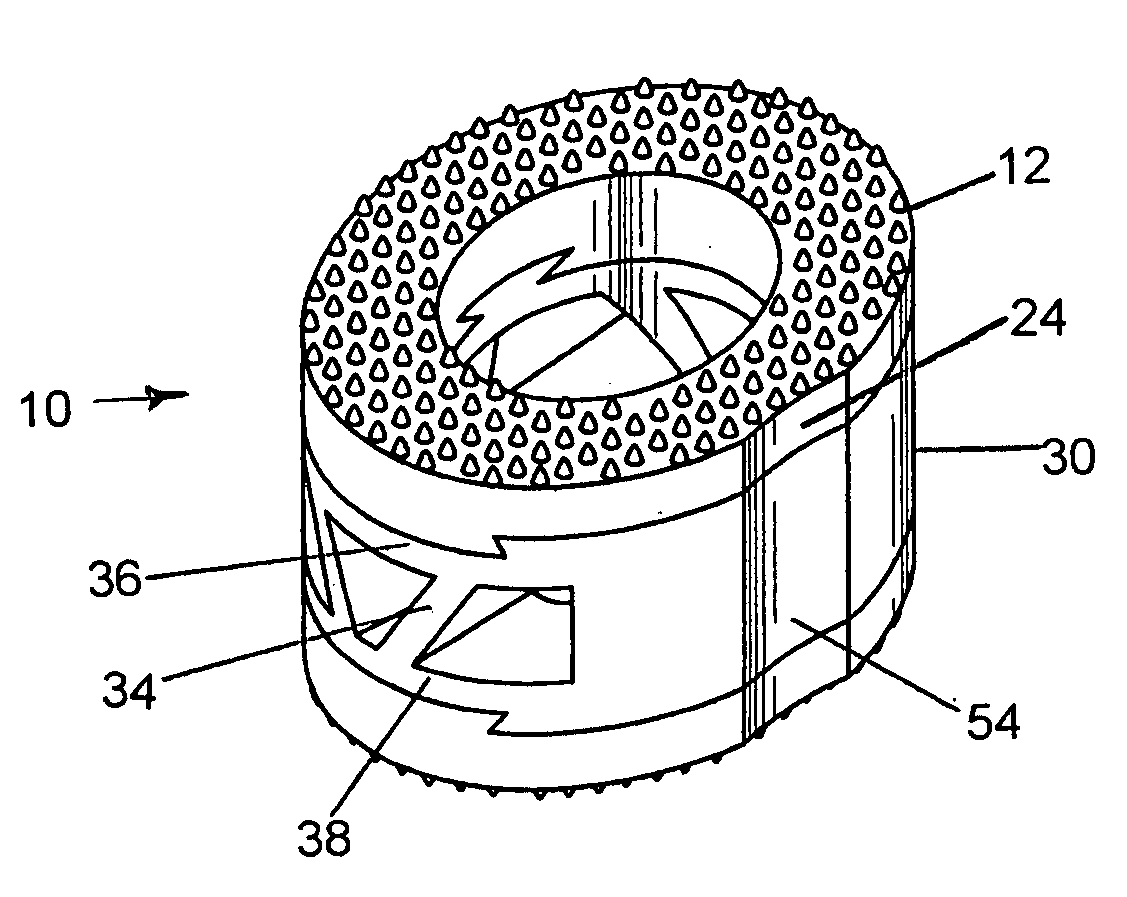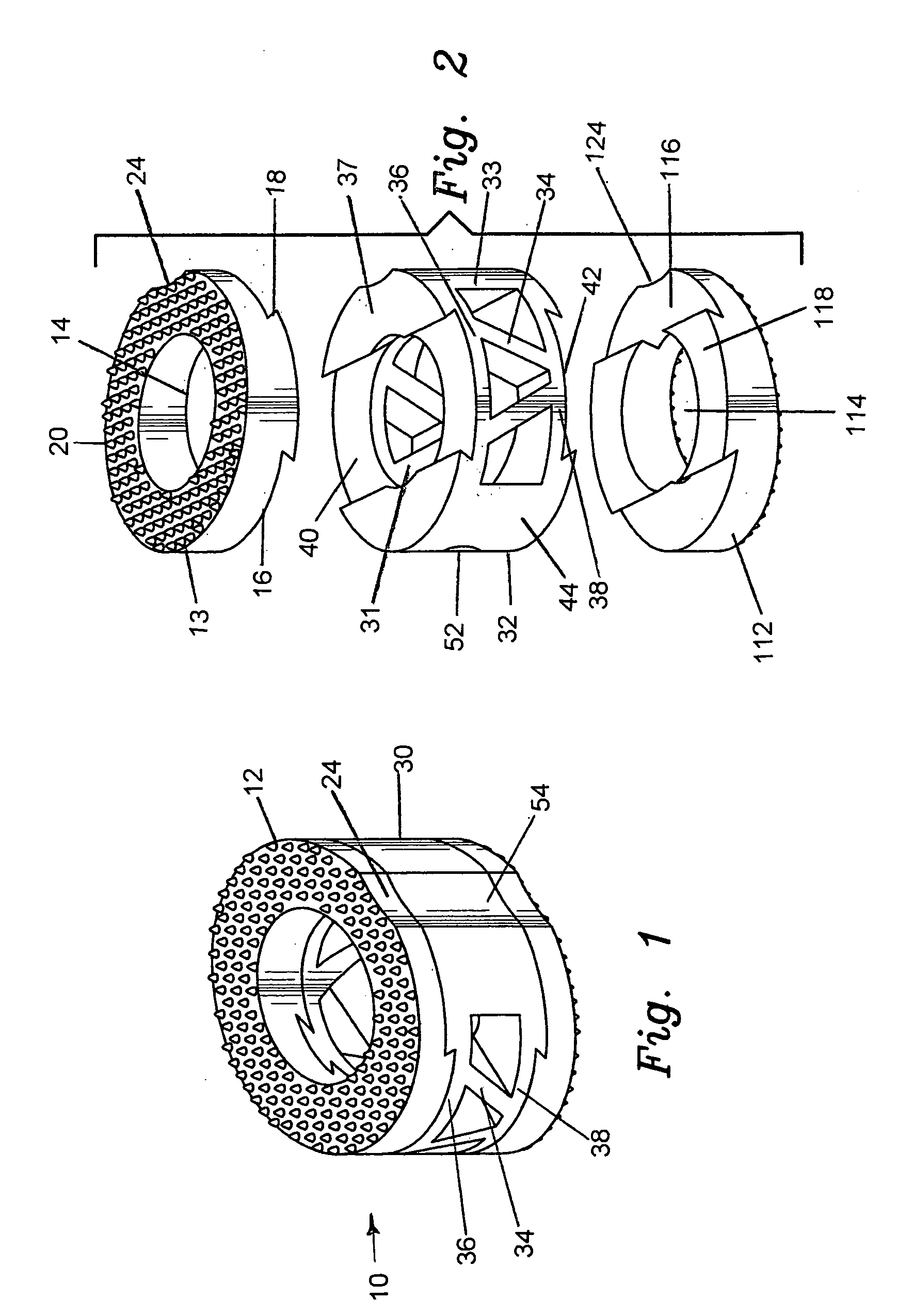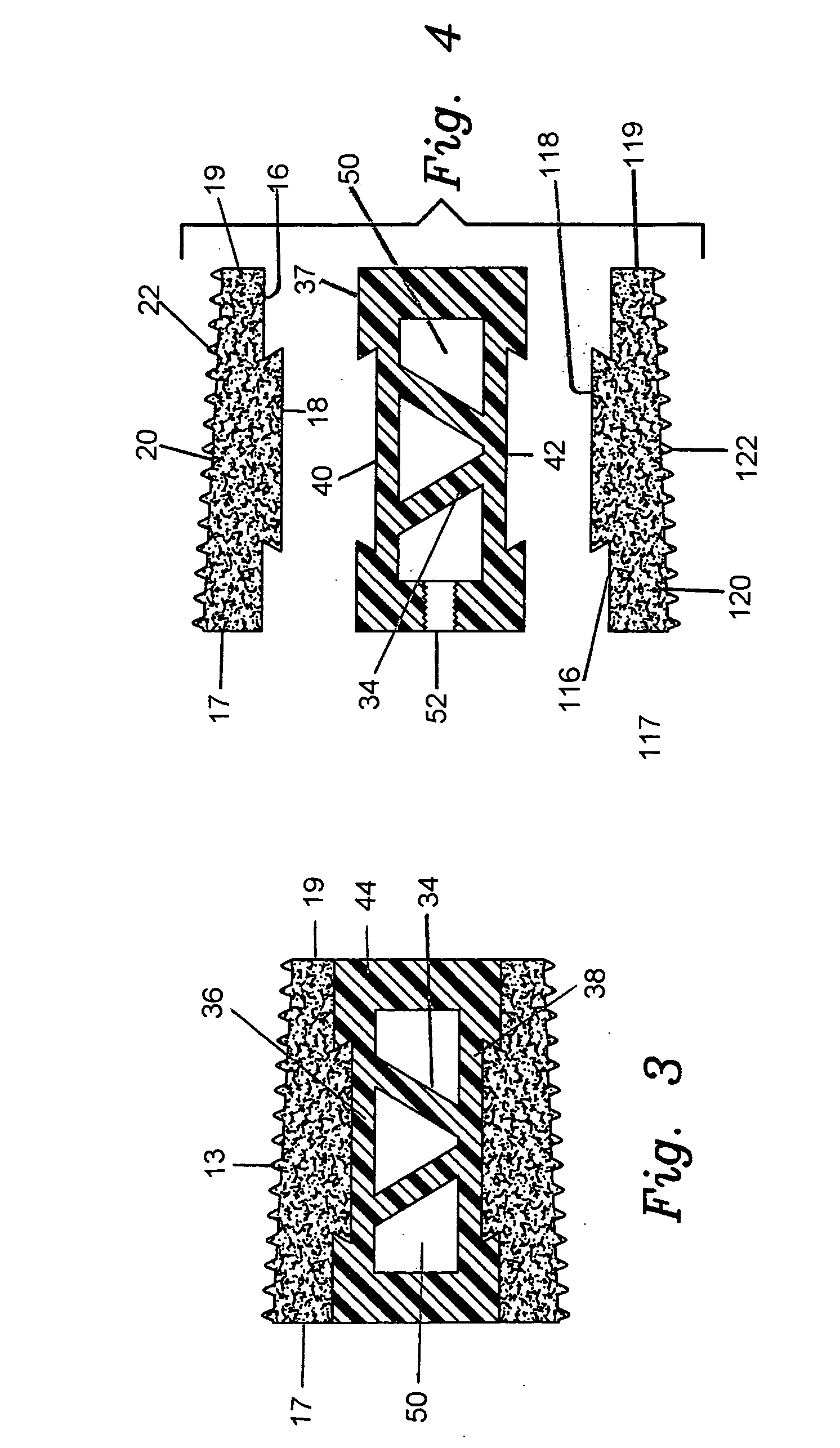Interbody fusion hybrid graft
a hybrid graft and interbody technology, applied in the field of surgical implants, can solve the problems of abnormal force applied to the cervical vertebra, bone material erosion, bone material erosion, etc., and achieve the effects of providing overall strength and durability to the structure, high force, and accelerating the healing process
- Summary
- Abstract
- Description
- Claims
- Application Information
AI Technical Summary
Benefits of technology
Problems solved by technology
Method used
Image
Examples
Embodiment Construction
[0036]The preferred embodiment and best mode of the present invention is shown in FIGS. 1 through 4. The composite bone implant block 10 is shown in FIG. 1 in accordance with the present invention.
[0037]The composite cortical bone block body or intervertebral spacer 10 is preferably constructed with a first end cap member 12 constructed of cortical bone taken from donors cut into a ring shape. The cap member body 13 has an interior circular through going bore 14 formed or cut therein, and defines a flat planar bottom surface 16 which is provided with a dove tail shaped projection 18 which extends outward from the planar bottom surface 16. The cap body is tapered with the rear end 17 being of a greater height than the front end 19. The outer or top surface 20 which is tapered has a plurality of teeth 22 formed or cut into the exterior surface to provide a gripping surface on the adjacent vertebrae. The taper runs between 5° to 10° and the height of the upper cap member runs between 3...
PUM
| Property | Measurement | Unit |
|---|---|---|
| total load bearing force | aaaaa | aaaaa |
| total load bearing force | aaaaa | aaaaa |
| height | aaaaa | aaaaa |
Abstract
Description
Claims
Application Information
 Login to View More
Login to View More - R&D
- Intellectual Property
- Life Sciences
- Materials
- Tech Scout
- Unparalleled Data Quality
- Higher Quality Content
- 60% Fewer Hallucinations
Browse by: Latest US Patents, China's latest patents, Technical Efficacy Thesaurus, Application Domain, Technology Topic, Popular Technical Reports.
© 2025 PatSnap. All rights reserved.Legal|Privacy policy|Modern Slavery Act Transparency Statement|Sitemap|About US| Contact US: help@patsnap.com



